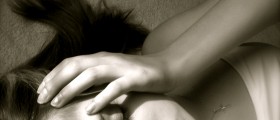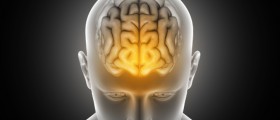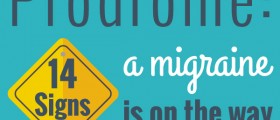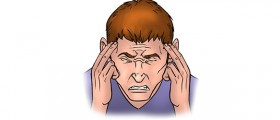
It is normal for migraine headaches to occur on one particular side of the head. Such migraines can lead to a throbbing. It is also common for migraines to lead to bilateral pain. Early symptoms are suffered by about sixty per cent of those who suffer from migraines. It might become obvious hours before the migraine occurs. Symptoms tend to vary from person to person, and from migraine to migraine, but in many cases, symptoms remain consistent over a certain period of time.
Migraines
There are several different types of symptoms that might occur as a result of migraines. For example, one can suffer from phonophobia, photophobia, or osmophobia. Phonophobia is a sensitivity to sound, photophobia is a sensitivity to light, while osmophobia involves a sensitivity to smell.
One might also experience lethargy, fatigue, lack of energy, or weariness. It is also common for people to experience mood swings, polyuria, stiffness and soreness of neck muscles, anorexia, constipation, or diarrhea.
Focused symptoms that last about an hour are known as aura. These symptoms normally grow over about five to fifteen minutes. For the most part, migraine headaches normally follow the aura. However, it is possible for symptoms of aura to develop at the same time as the migraine. One could also experience negative scotomata. This refers to a blurred or absent areas of vision. Tunnel vision or even complete blindness can occur in certain cases.
Some people might also experience an absent arc or band of vision with a shimmering or glittering zigzag border. Often, this is combined with photopsias or visual hallucinations. This is known as a fortification spectrum, due to the resemblance of the jagged edges of the hallucinated arc to a fortified town surrounded by bastions.
Some people might experience some kinds of motor symptoms. These symptoms include hemiparesis and aphasia. Hemiparesis is weakness that occurs along one side of the body, while aphasia leads to a poor or absent understanding or production of speech, writing, or signs.
Some typical signs of headache are slow onset, throbbing pain, pulsing pain, that eventually evolves into a continuous or bandlike pattern. Some other potential symptoms are paleness, light headedness, nausea, vomiting, head or neck tenderness, Horner syndrome, conjunctival injection, slow heart rate, accelerated heart rate, hypertension, or hypotension. Hemisensory or hemiparetic deficits might also occur, as might dim scotoma, artery tenderness, meningismus, increased lethargy, mental status changes, and high blood pressure.














Your thoughts on this
Loading...